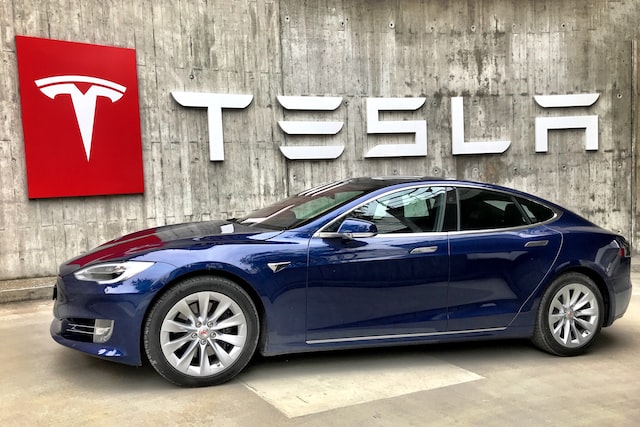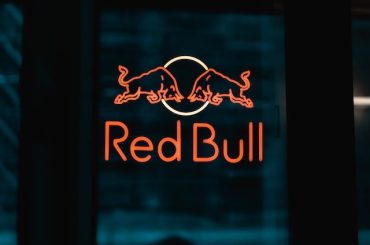Before we dive deep into the Marketing Mix (4Ps), let’s get the business overview of Tesla. Tesla, Inc. is an American electric vehicle and clean energy company founded in 2003 by entrepreneur and business magnate Elon Musk. The company is named after the renowned inventor and electrical engineer Nikola Tesla.
Tesla designs and manufactures a range of electric vehicles, including the Model S, Model X, Model 3, Model Y, and Cybertruck. The company also produces renewable energy products like solar panels, energy storage systems, and solar roofs.
Tesla’s electric vehicles are known for their long-range, high-performance, and advanced technology features. They have gained a significant market share in the electric vehicle industry and are considered one of the leading companies in the field. Additionally, Tesla’s energy products have helped to promote the adoption of clean and renewable energy sources.
Tesla’s mission is to accelerate the world’s transition to sustainable energy. The company is committed to reducing the world’s dependence on fossil fuels and mitigating the effects of climate change. Post its 2022 annual report analysis,
- In 2022, Tesla produced 1,369,611 consumer vehicles. Tesla is currently focused on increasing vehicle production, capacity, and delivery capabilities, improving and developing battery technologies, improving FSD capabilities, increasing the affordability and efficiency of its vehicles, bringing new products to market, and expanding the global infrastructure.
- In 2022, Tesla deployed 6.5 GWh of energy storage products and 348 megawatts of solar energy systems. Tesla is currently focused on ramping production of energy storage products, improving its Solar Roof installation capability and efficiency, and increasing the market share of retrofit and new build solar energy systems.
- In 2022, Tesla recognized total revenues of $81.46 billion, respectively, representing an increase of $27.64 billion compared to the prior year.
- In 2022, Tesla’s net income attributable to common stockholders was $12.56 billion, representing a favorable change of $7.04 billion compared to the prior year.
How does Tesla make money: Business Model & Supply Chain Analysis
Here is the Marketing Mix (4Ps) for Tesla
A marketing mix, also known as the 4Ps of marketing, is framework marketers use to develop and implement effective marketing strategies. The concept helps businesses identify and optimize the key components necessary to promote and sell their products or services. The 4Ps of the marketing mix are Product, Price, Place, and Promotion.
In addition to the traditional 4 Ps, marketers have expanded their strategies by incorporating additional elements (People, Process & Performance) to help them better understand and reach their target audiences. But we will focus on the 4Ps as they still are the foundation of any marketing strategy. In this article, we will understand the marketing mix (4Ps) of Tesla.
What is a Marketing Mix? What are the 4Ps of Marketing?
Product
Tesla’s product portfolio can be examined into three main categories:
- Electric Vehicles: Tesla’s primary product offering is its range of electric vehicles, designed to be environmentally friendly, stylish, and high-performing. The company’s lineup includes
- Tesla Model S: A luxury sedan known for its long-range, acceleration, and advanced technology.
- Tesla Model 3: A more affordable, mass-market electric sedan with impressive range and performance.
- Tesla Model X: A high-performance, all-electric SUV with distinctive falcon-wing doors.
- Tesla Model Y: A compact crossover SUV focusing on efficiency, performance, and versatility.
- Tesla Cybertruck: An all-electric pickup truck with a unique design, robust performance, and high utility.
- Tesla Roadster: A high-performance electric sports car with groundbreaking acceleration and range capabilities.
- Energy Storage Solutions: Tesla also offers energy storage products that aim to promote the use of renewable energy and help customers manage their energy consumption more efficiently. These products include
- Tesla Powerwall: A home battery system that stores energy from solar panels or the grid, providing backup power during outages and reducing energy costs.
- Tesla Powerpack is a large-scale energy storage solution for commercial and industrial applications and utility-scale projects.
- Tesla Megapack: A massive energy storage system designed for grid-scale projects to support the transition to renewable energy sources.
- Clean Energy Products: Tesla is also committed to making clean energy accessible and easy to adopt. They offer products like
- Tesla Solar Panels: High-efficiency solar panels for residential and commercial applications that generate clean energy and help reduce electricity bills.
- Tesla Solar Roof: An innovative roofing solution that incorporates solar cells into the roof tiles, turning the entire roof into a power generator.
- Tesla Supercharger Network: A rapidly expanding network of high-speed charging stations for Tesla electric vehicles, making long-distance travel more convenient for EV owners.
Tesla’s product strategy in its marketing mix focuses on innovation, performance, and sustainability, setting it apart from competitors and creating a unique brand identity. By continuously pushing the boundaries of what electric vehicles and clean energy products can achieve, Tesla aims to accelerate the world’s transition to sustainable energy sources.
Price
- Premium Pricing: Tesla’s vehicles, particularly the early models (Model S and Model X), were positioned as premium, high-performance electric vehicles. These models were priced significantly higher than the average car, reflecting their unique features, cutting-edge technology, and luxury status. This premium pricing strategy allowed Tesla to establish its brand as a leader in the electric vehicle market and gain a competitive edge over traditional automakers.
- Cost Leadership: Tesla has also pursued a cost leadership strategy to reduce production costs and pass on the savings to consumers. Introducing the Tesla Model 3, a more affordable electric vehicle, shifted Tesla’s pricing approach. With the Model 3, Tesla targeted the mass market and made electric vehicles more accessible to a broader audience. The company has continuously improved its manufacturing efficiency, battery technology, and vertical integration to lower costs and reduce prices.
- Value-Based Pricing: Tesla’s pricing strategy also considers the value proposition offered to customers. The company’s vehicles have numerous features that justify the price points, such as long-range capabilities, impressive performance, advanced safety features, and cutting-edge technology (like the Autopilot system and over-the-air software updates). Additionally, Tesla’s clean energy products, like solar panels and energy storage solutions, provide customers with long-term savings on energy costs, further justifying their price tags.
- Dynamic Pricing: Tesla has employed a dynamic pricing approach, adjusting prices based on product demand, manufacturing costs, and exchange rates. Over the years, Tesla has made several price changes to its vehicle lineup, sometimes increasing prices due to rising production costs or lowering them to reflect improvements in manufacturing efficiency.
Place
- Direct Sales Model: Unlike most automakers that rely on a network of independent dealerships, Tesla uses a direct sales model, selling vehicles directly to customers through its website and company-owned stores. This approach allows Tesla to control the entire customer experience, from marketing and sales to after-sales service. It also eliminates the need for middlemen, reducing costs and enabling better communication with customers.
- Company-Owned Stores and Showrooms: Tesla operates a network of stores and showrooms in strategic locations, such as shopping malls and city centers. These stores serve as retail outlets and educational centers, where customers can learn about electric vehicles, test drive Tesla cars, and place orders. This retail approach provides a unique buying experience and helps increase brand awareness and customer engagement.
- Online Sales Platform: Tesla has embraced e-commerce, allowing customers to customize and order vehicles directly through its website. This online sales platform makes the purchasing process more convenient and streamlined for customers while also reducing overhead costs associated with traditional dealerships.
- Service Centers and Mobile Service: Tesla operates a network of company-owned service centers to provide after-sales support and maintenance. Additionally, Tesla offers a mobile service program where technicians travel to customers’ locations to perform repairs and maintenance. This approach enhances customer convenience and helps ensure high service quality.
- Supercharger Network: Tesla has developed and continues to expand its proprietary Supercharger network, which consists of high-speed charging stations for Tesla vehicles. This network helps address the issue of range anxiety, making long-distance travel more feasible and convenient for Tesla owners.
- Vertical Integration: Tesla has taken significant steps toward vertical integration, aiming to control various aspects of its supply chain. The company produces many components in-house, including batteries manufactured at its Gigafactories. This vertical integration helps Tesla maintain control over product quality, reduce costs, and improve production efficiency.
Promotion
- Limited Traditional Advertising: Unlike most automakers, Tesla spends little on traditional advertising, such as TV commercials, print ads, or billboards. Instead, the company relies on its products’ appeal and word-of-mouth’s power to generate interest and drive sales. This unconventional approach has allowed Tesla to allocate resources more efficiently and build a strong brand presence with relatively low marketing costs.
- Public Relations and Media Coverage: Tesla leverages public relations and media coverage to maintain a strong presence in the public eye. The company makes headlines for its product launches, technological advancements, and ambitious goals, often generating significant media attention. Tesla’s CEO, Elon Musk, also plays a crucial role in the company’s promotion strategy, with his personal brand and social media presence helping to keep Tesla at the forefront of public discussions.
- Social Media and Online Engagement: Tesla has a strong presence on various social media platforms, sharing news, updates and engaging content with its followers. The company also benefits from the extensive social media reach of its CEO, Elon Musk, who often shares Tesla-related news, engages with customers, and discusses industry trends on platforms like Twitter.
- Product Launch Events and Demonstrations: Tesla organizes high-profile product launch events, which generate significant media coverage and public interest. These events showcase the company’s latest products, innovations, and vision for the future, often creating a sense of excitement and anticipation among consumers and industry watchers.
- Customer Referral Program: Tesla has utilized customer referral programs to encourage satisfied customers to refer their friends and family to the brand. This strategy leverages the power of word-of-mouth and personal recommendations, helping Tesla to reach new customers and build a loyal customer base.
- Partnerships and Collaborations: Tesla engages in partnerships and collaborations with other companies, governments, and organizations to promote its brand and products. For example, the company has worked with various hotel chains and businesses to install destination charging stations, making Tesla vehicles more appealing to potential customers.











